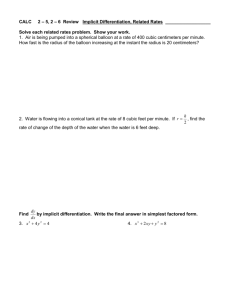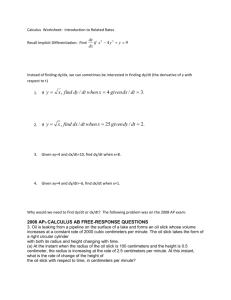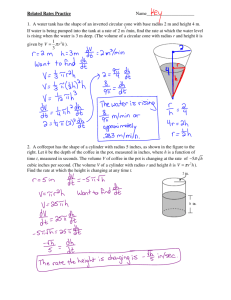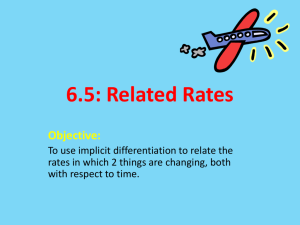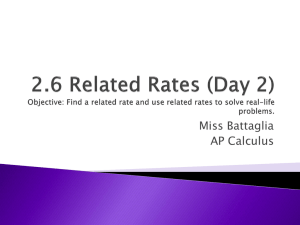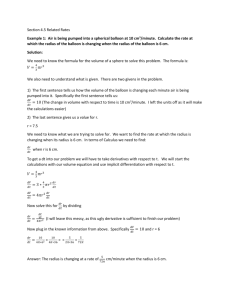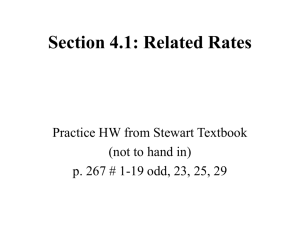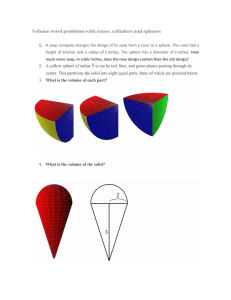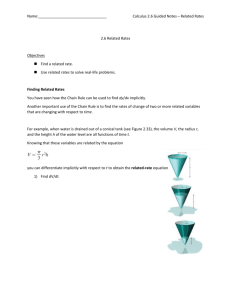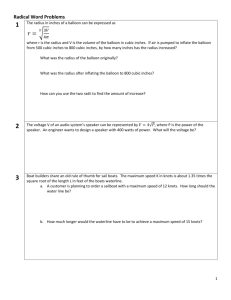Calculus Tutorial: Related Rates
advertisement
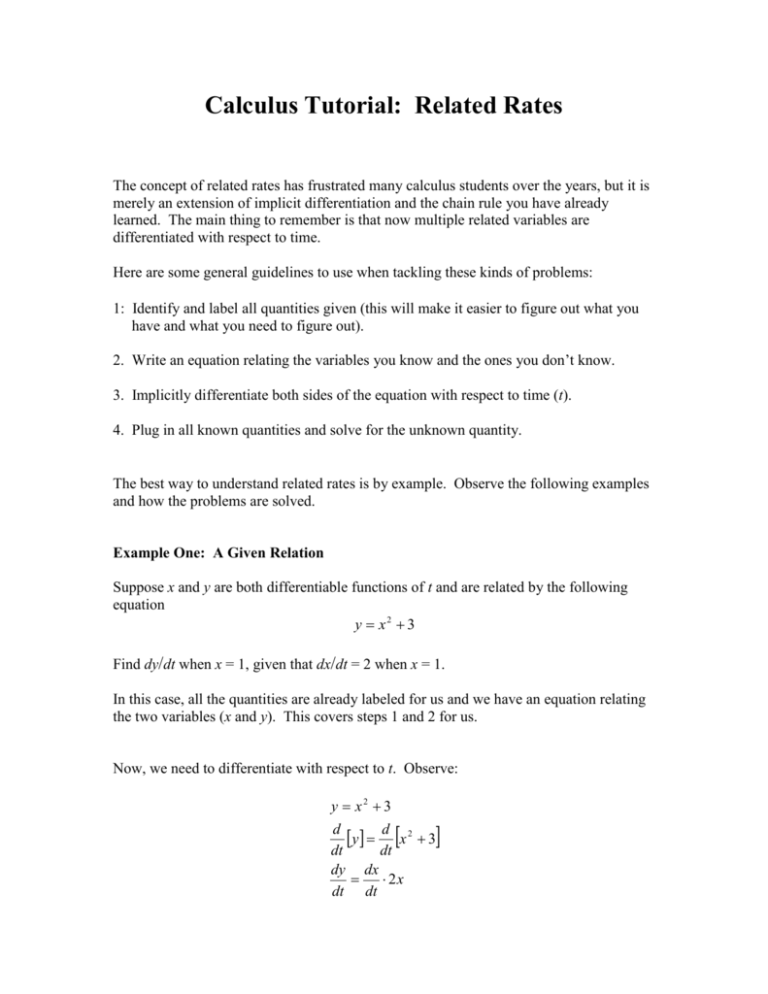
Calculus Tutorial: Related Rates The concept of related rates has frustrated many calculus students over the years, but it is merely an extension of implicit differentiation and the chain rule you have already learned. The main thing to remember is that now multiple related variables are differentiated with respect to time. Here are some general guidelines to use when tackling these kinds of problems: 1: Identify and label all quantities given (this will make it easier to figure out what you have and what you need to figure out). 2. Write an equation relating the variables you know and the ones you don’t know. 3. Implicitly differentiate both sides of the equation with respect to time (t). 4. Plug in all known quantities and solve for the unknown quantity. The best way to understand related rates is by example. Observe the following examples and how the problems are solved. Example One: A Given Relation Suppose x and y are both differentiable functions of t and are related by the following equation y x2 3 Find dy/dt when x = 1, given that dx/dt = 2 when x = 1. In this case, all the quantities are already labeled for us and we have an equation relating the two variables (x and y). This covers steps 1 and 2 for us. Now, we need to differentiate with respect to t. Observe: y x2 3 d y d x 2 3 dt dt dy dx 2x dt dt Now we can plug in our known quantities to solve for the unknown quantity. dy dx 2x dt dt 2 2 1 4 The rate of change of y with respect to time is 4. This was an easier example because steps 1 and 2 were already done for us. In most word problems, you have to find the useful information in the problem. Example Two: An Inflating Balloon Air is being pumped into a spherical balloon at a rate of 4.5 cubic inches per minute. Find the rate of change of the radius when the radius is 2 inches. So in this case we need to start with step 1. Define r as the radius of the balloon. So, r = 2. Now, when we think about the other quantity (the pump rate), look at the units. Cubic inches implies this is a volume quantity. So our next variable is V for the volume of the balloon. We know the rate of change of the volume is 4.5 so, dV/dt = 4.5 The question is asking us to find the rate of change of the radius which could be labeled as dr/dt. Now, we need to write an equation relating our two variables (V and r). This is step 2. We know the balloon is spherical so we could write the equation of the volume of a sphere in terms of its radius. V 4 r 3 3 On to step 3. We need to implicitly differentiate this equation (both sides) with respect to time. 4 r 3 3 dV 4 dr 3 r 2 dt 3 dt dV dr 4r 2 dt dt dV dr dt dt 4r 2 V I solved for dr/dt because this is what we are looking for. Last, if we plug in our known values, we can find the rate of change of the radius with respect to time. dV dr dt dt 4r 2 4.5 4 (2) 2 0.09 Therefore the rate of change of the radius with respect to time when the radius is 2 inches is 0.09 inches per minute. It’s important to be able to recognize certain geometric situations (like the Pythagorean theorem, volume and area formulas for various shapes and solids, and trigonometric identities).
